Of all the different nootropics I've tried over the years, few have been as effective as bromantane. While it's far from being the perfect smart drug, this interesting substance is one of my favorites. It even made it onto my list of the 3 most underrated nootropics.
In this research-backed post we're going to take a look at the nootropic benefits of bromantane. We'll look at its effects, dosage, potential negative effects, and more. But first let's take a look at what bromantane is.
What Is Bromantane?
Like many other nootropics, this substance was developed in Russia. Bromantane, also known as adamantylbromphenylamine, was first derived from adamantane in the 1980s.1 The Russians had been experimenting with adamantane derivatives since the 1960s, originally as a treatment for influenza (the flu).2 After realizing that adamantane derivatives had psychostimulant effects, they developed new ones including bromantane.3
Bromantane was found to have stronger and longer-lasting psychostimulant effects than the other adamantanes.4 Because of this, it was rigorously studied and eventually became a prescription drug to treat asthenia (lack of energy/physical weakness) sold under the brand name Ladasten.5
In addition to using bromantane as a prescription medication, the Russians also used it for performance enhancement. During the 1996 Summer Olympics, several Russian athletes tested positive for bromantane. A year later, the World Anti-Doping Agency (WADA) banned bromantane, noting its stimulating and performance-enhancing properties.6
 WADA – the agency responsible for making sure athletes don't use performance-enhancing drugs (PEDs) – doesn't go around banning every substance it comes across: only the ones that work. And there's plenty of science to show that bromantane works which we'll get to shortly.
WADA – the agency responsible for making sure athletes don't use performance-enhancing drugs (PEDs) – doesn't go around banning every substance it comes across: only the ones that work. And there's plenty of science to show that bromantane works which we'll get to shortly.
Additionally, there are numerous case reports from around the world that support bromantane's use as a nootropic. Users often report that it makes them feel more motivated and focused, less anxious, and puts them in a better mood. While not everybody responds to bromantane, many people do. For me personally it has worked great. I've experienced all the nootropic benefits mentioned above. Now let's dive a little deeper into the science behind bromantane and look at some of these effects in more detail.
The Nootropic Benefits Of Bromantane
Bromantane has undergone extensive clinical trials in Russia. The results of those trials have shown bromantane to be both safe and effective at treating a variety of mood-and-anxiety-related disorders (as defined by the Russians). Unfortunately, this fascinating substance has not been the subject of very much human study in the English-speaking world. However, some animal research has been published in English that supports the conclusions made by Russian scientists.
The research that has been done, both in humans and animals, shows bromantane to have a lot of potential as a nootropic. Though its use as a nootropic hasn't been explicitly studied to any significant degree, the science that has been done points to several possible benefits. These potential nootropic benefits of bromantane include:
 Improved mood
Improved mood- Decreased anxiety
- Increased energy
- Improved physical performance
- Improved overall sense of well-being
The largest clinical trial done on bromantane I could find was conducted in Russia and the results were published in 2010.7 This study looked at the effect bromantane had on the mental health of 728 patients diagnosed with asthenic (weakness-related) disorders. These patients were given a daily dose of between 50-100 milligrams (mg) of bromantane for 28 days. The researchers assessed each patient before starting bromantane; on days 3, 7, 14, and 28; and again a month after the end of treatment.
The results of this study showed bromantane to have a variety of nootropic-like properties. After just 3 days of treatment, patients had an increase in mental and physical energy. This effect remained throughout the trial and was even found during the one-month follow-up. The researchers also reported that bromantane had a powerful anxiolytic (anxiety-reducing) effect, improved sleep quality, and increased overall quality of life (QOL).
Of the 728 patients in this trial, less than 3% experienced any side effects. And none of the ones reported were serious. The authors of this study concluded that, for some people, bromantane is safe and effective at treating asthenic disorders and they recommend its use in clinical practice.
Though the above study is the largest I could find, it's not the only one. A placebo-controlled clinical trial published in 2009 looked at the effect bromantane had on patients diagnosed with neurasthenia.5 This is a generic diagnosis used to describe a variety of symptoms including depressed mood, decreased energy levels, and fatigue.8
 The results of this five-week placebo-controlled study showed bromantane to have a combination of psychostimulant and anxiolytic effects. It was found to be significantly more effective at treating neurasthenia than a placebo. The authors of this study also noted the absence of any serious side effects or signs of withdrawal syndrome after bromantane was discontinued.
The results of this five-week placebo-controlled study showed bromantane to have a combination of psychostimulant and anxiolytic effects. It was found to be significantly more effective at treating neurasthenia than a placebo. The authors of this study also noted the absence of any serious side effects or signs of withdrawal syndrome after bromantane was discontinued.
While the above studies looked at the effect daily bromantane dosing had, a paper published in 2006 discussed the effects of a single dose.9 The authors found bromantane's stimulant effect to predominate its anxiolytic-and-other effects. They concluded that bromantane can be not only a safe and effective treatment for a variety of psychiatric symptoms, but also a rapidly acting one.
All of this human research is consistent with my own experience with bromantane. I've found it to be both stimulating and relaxing at the same time. But how does it work? Let's take a look at some of the research that has been done on how bromantane works in the brain.
Bromantane In The Brain
While it is often categorized as a psychostimulant, bromantane works differently than stimulants like amphetamine (Adderall, Vyvanse, Dexedrine, etc.), methylphenidate (Ritalin, Concerta, etc.), cocaine, and others.10 These substances induce the release of the neurotransmitter dopamine and/or inhibit its reuptake by acting directly on the dopamine transporter.11
 Bromantane also affects dopamine in the brain, but through less-direct genomic mechanisms. It has been shown to cause fast, long-lasting upregulation in several parts of the brain of two important enzymes the body uses to create dopamine: tyrosine hydroxylase (TH) and DOPA decarboxylase, aka aromatic L-amino acid decarboxylase (AAAD).12
Bromantane also affects dopamine in the brain, but through less-direct genomic mechanisms. It has been shown to cause fast, long-lasting upregulation in several parts of the brain of two important enzymes the body uses to create dopamine: tyrosine hydroxylase (TH) and DOPA decarboxylase, aka aromatic L-amino acid decarboxylase (AAAD).12
By upregulating TH and AAAD, bromantane is able to increase dopamine production and release throughout the brain. After bromantane administration, enhanced dopaminergic neurotransmission has been observed in several parts of the brain including the hypothalamus, nucleus acumbens, striatum, and ventral tegmental area, among others.13
A study done on rats published in 2012 showed that bromantane increased the expression of neurotrophins in the brain.14 In other words, it increased the growth of new brain cells. Among the neurotrophins bromantane affected were nerve growth factor (NGF) and brain-derived neurotrophic factor (BDNF). The parts of the rat brain where the increase in gene expression was found included the hypothalamus, striatum, and hippocampus.
Bromantane Negative Effects
![]() Bromantane has been shown to be very safe when taken in therapeutic dosages. Personally, I've never noticed any negative effects from taking 50-100 mg of bromantane daily. However, the one time I took 150 mg, it made me feel slightly edgy throughout the day. It really wasn't that bad: the edginess was barely noticeable. But whenever I've stuck to 100 mg or less, I've never noticed any negative effects.
Bromantane has been shown to be very safe when taken in therapeutic dosages. Personally, I've never noticed any negative effects from taking 50-100 mg of bromantane daily. However, the one time I took 150 mg, it made me feel slightly edgy throughout the day. It really wasn't that bad: the edginess was barely noticeable. But whenever I've stuck to 100 mg or less, I've never noticed any negative effects.
Several human studies have looked at the safety of bromantane and the results show that it has few-to-no negative effects and is safe to take for extended periods of time.15 Additionally, the authors of at least one study noted that bromantane doesn't produce dependence or tolerance, has little or no potential for addiction, and does not show any signs of withdrawal after stopping it.5
Animal studies have also shown that bromantane is safe to take for extended periods of time. A paper published in 2000 looked at the effect bromantane administration had on rats.16 After 2 months of daily use, the rats did not experience tolerance to bromantane, nor did they show any signs of drug dependence.
Bromantane Dosage
![]()
Bromantane is usually taken in a dosage of 50-100 mg/day. Almost all of the studies mentioned above used dosages within this range. And this is the range typically seen being used for nootropic purposes.
While some of bromantane's effect may be noticeable after a single dose, it works best when taken daily. Most users find it's best to take bromantane early in the morning. That's because it can take several hours for its effect to be felt. According to one study, the psychostimulant effects of bromantane come on gradually over the course of 1.5-2 hours and lasts for 8-12.13
This is consistent with my experience. Sometimes it takes even longer for me to feel bromantane after I take it. And lots of people who have taken bromantane for nootropic purposes report the same thing. It's often reported that it can take up to 4 hours for the acute effects of bromantane to be felt. One study showed that it takes 2.75 hours for bromantane to achieve maximum concentration in women and 4 hours in men.15
Bromantane can be taken with or without food but may absorb better when taken with a small meal or snack that contains at least a few grams of fat. Personally, I've always taken bromantane early in the day on an empty stomach and it's worked just fine for me.
It can be a good idea to talk to your doctor before starting any new supplements, drugs, exercise routines, or making any other major behavioral changes. This is especially true if you're currently taking any prescription medications. And lastly, keep in mind that bromantane is on WADA's Prohibited Substances List. If you play a sport that has anti-doping rules, you'll probably want to stay away from bromantane.
Where To Buy Bromantane

You're unlikely to find bromantane in any brick-and-mortar stores. However, it's available online from a few different nootropic vendors. The best place to buy bromantane online is Science.bio. They have an awesome selection of high-quality products. Their prices are reasonable, shipping is fast and discreet, and they have excellent customer service. Science.bio offers bromantane in both powder and liquid form.
Conclusion
Of all the nootropics I've tried, bromantane is among my favorites. It always gives me more energy, puts me in a better mood, and makes me feel relaxed yet focused. The only real downside is that it can take several hours to work. But overall I find bromantane to be a safe and effective nootropic that I'll likely use again in the future at some point.
Have you used bromantane? If so, what has your experience been like? Feel free to leave your answer in the comments section at the bottom. And if you haven't already, please sign up for the NZ newsletter below.
To learn more about nootropics, sign up for the Nootropics Zone newsletter. You'll get the free gift, The Ultimate Nootropics Quick Reference Guide.
References
1Ladasten (adamantylbromphenylamine) tablets for oral use. Full prescribing information. (n.d.). Russian State Register of Medicines. Retrieved July 7, 2023 from https://web.archive.org/web/20160203233325/http://grls.rosminzdrav.ru/InstrImg.aspx?idReg=9383&t=&isOld=1
2Mandell, L., Woodhead, M., Ewig, S., & Torres, A. (2006). Respiratory Infections. CRC Press: London.
3Iezhitsa, I., Spasov, A., & Bugaeva, L. (2001). Effects of bromantan on offspring maturation and development of reflexes. Neurotoxicology and Teratology, 23(2):213-22.
4Krapivin, S., Sergeeva, S., & Morozov, I. (1993). Quantitative pharmaco-electroencephalographic analysis of bromantane. Bulletin of Experimental Biology & Medicine, 116:1399-1402.
5Neznamov, G., Siuniakov, S., Teleshova, S., et al. (2009). Ladasten, the new drug with psychostimulant and anxiolytic actions in treatment of neurasthenia (results of the comparative clinical study with placebo). Zhurnal Nevrologii Psikhiatrii Imeni S.S. Korsakova, 109(5):20-6.
6Burnat, P., Payen, A., Brumant-Payen, C., et al. (1997). Bromontan, a new doping agent. Lancet, 350(9082):963-4.
7Voznesenskaia, T., Fokina, N., & Iakhno, N. (2010). Treatment of asthenic disorders in patients with psychoautonomic syndrome: results of a multicenter study on efficacy and safety of ladasten. Zhurnal Nevrologii Psikhiatrii Imeni S.S. Korsakova, 110(5 Pt 1):17-26.
8Neurasthenia. (n.d.). Wikipedia.org. Retrieved May 5, 2021 from https://en.wikipedia.org/wiki/Neurasthenia
9Siuniakov, S., Grishin, S., Teleshova, E., et al. (2006). Pilot clinical trial of ladasten. Eksperimental'naia I Klinicheskaia Farmakologiia, 69(4):10-15.
10Vakhitova, Y., Yamidanov, R., Vakhitov, V., & Seredenin, S. (2005). cDNA macroarray analysis of gene expression changes in rat brain after a single administration of a 2-aminoadamantane derivative. Molecular Biology, 39:244-52.
11Vakhitova, Y., Yamidanov, R., Vakhitov, V., & Seredenin, S. (2005). The effect of ladasten on gene expression in the rat brain. Doklady Biochemistry & Biophysics, 401:150-3.
12Vakhitova, I., Iamidanov, R., & Seredinin, S. (2004). Ladasten induces the expression of genes regulating dopamine biosynthesis in various structures of rat brain. Eksperimental'naia I Klinicheskaia Farmakologiia, 67(4):7-11.
13Mikhaylova, M., Vakhitova, J., Yamidanov, R., et al. (2007). The effects of ladasten on dopaminergic neurotransmission and hippocampal synaptic plasticity in rats. Neuropharmacology, 53(5):601-8.
14Salimgareeva, M., Yamidanov, R., Vakhitova, Y., & Seredenin, S. (2012) Mechanisms of action of ladasten: activation of gene expression for neurotrophins and mitogen-activated kinases. Bulletin of Experimental Biology & Medicine, 152(3):313-7.
15Oliynyk, S., & Oh, S. (2012). The pharmacology of actoprotectors: practical application for improvement of mental and physical performance. Biomolecules & Therapeutics, 20(5):446-56.
16Iezhitsa, I., Bugaeva, L., Sapsov, A., & Morozov, S. (2000). Effect of bromantane on the rat neurologic status in two month course. Eksperimental-naia I Klinicheskaia Farmakologiia, 63(5):13-7.
[This article was originally published on May 7, 2021. Updated July 7, 2023.]

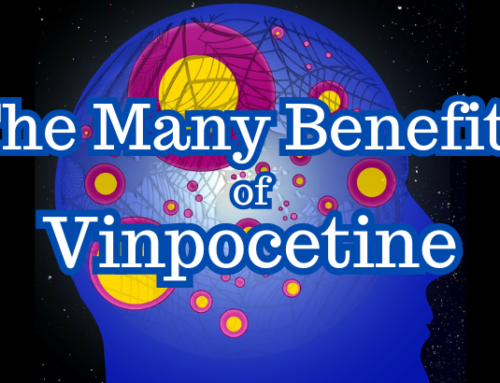
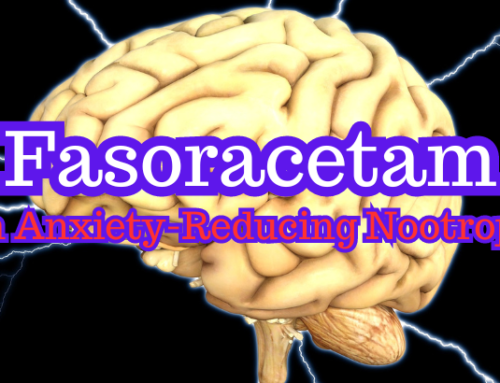
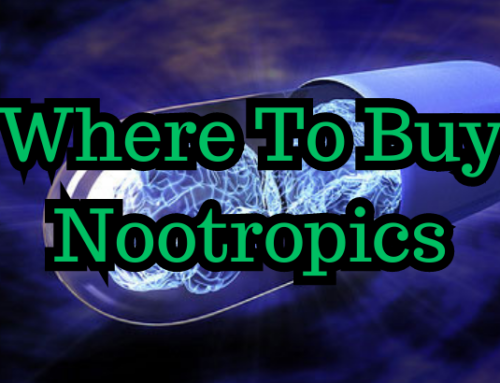
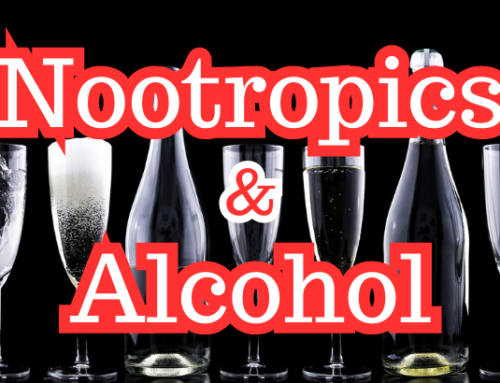
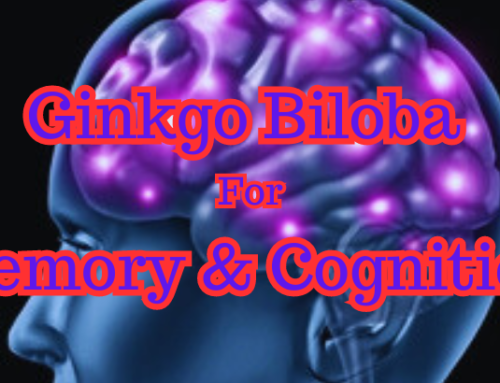

Leave a Reply